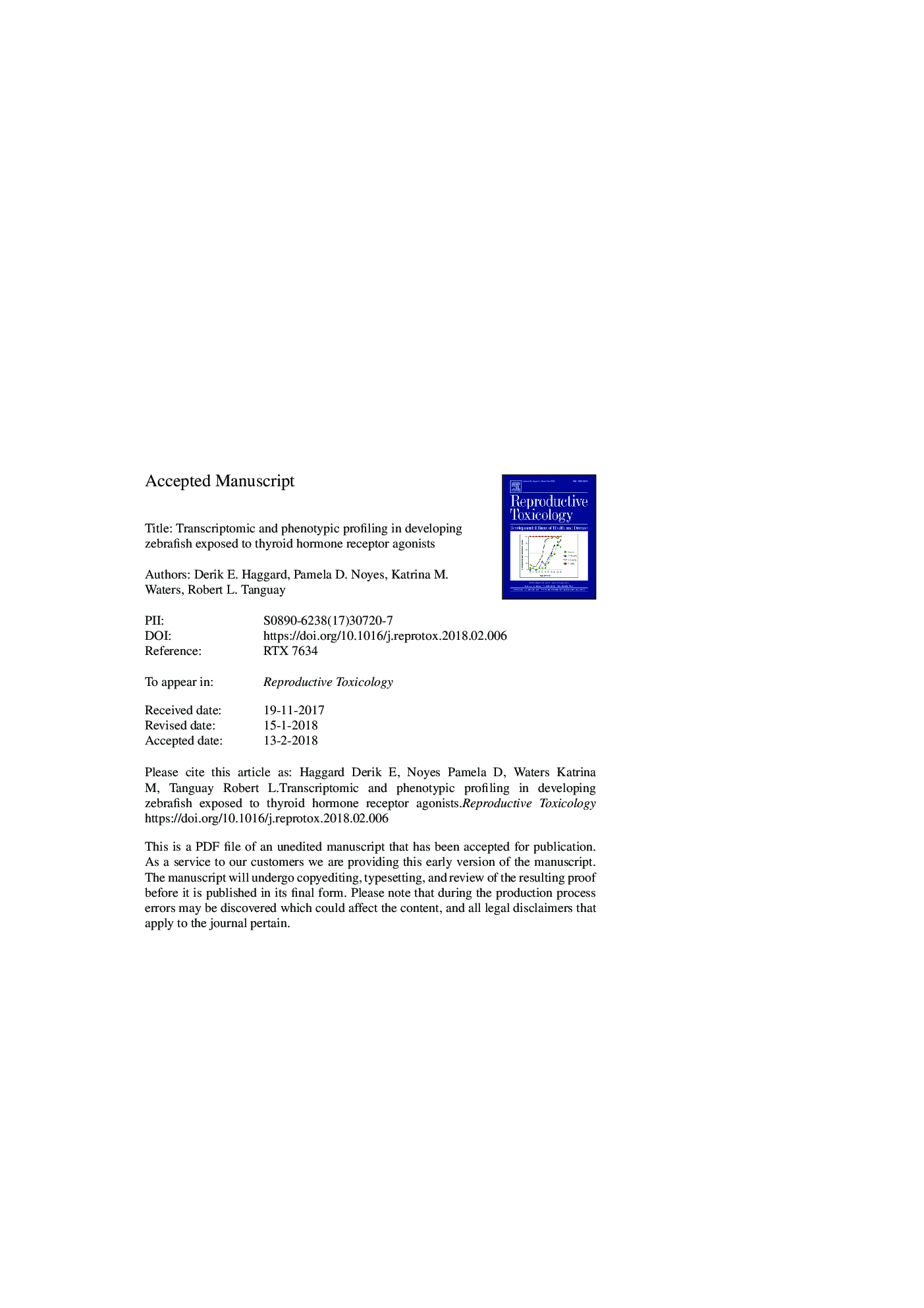| Article ID | Journal | Published Year | Pages | File Type |
|---|---|---|---|---|
| 8552343 | Reproductive Toxicology | 2018 | 44 Pages |
Abstract
There continues to be a need to develop in vivo high-throughput screening (HTS) and computational methods to screen chemicals for interaction with the estrogen, androgen, and thyroid pathways and as complements to in vitro HTS assays. This study explored the utility of an embryonic zebrafish HTS approach to identify and classify endocrine bioactivity using phenotypically-anchored transcriptome profiling. Transcriptome analysis was conducted on zebrafish embryos exposed to 25 estrogen-, androgen-, or thyroid-active chemicals at concentrations that elicited adverse malformations or mortality at 120â¯h post-fertilization in 80% of animals exposed. Analysis of the top 1000 significant differentially expressed transcripts and developmental toxicity profiles across all treatments identified a unique transcriptional and phenotypic signature for thyroid hormone receptor agonists. This unique signature has the potential to be used as a tiered in vivo HTS and may aid in identifying chemicals that interact with the thyroid hormone receptor.
Keywords
Related Topics
Life Sciences
Environmental Science
Health, Toxicology and Mutagenesis
Authors
Derik E. Haggard, Pamela D. Noyes, Katrina M. Waters, Robert L. Tanguay,
